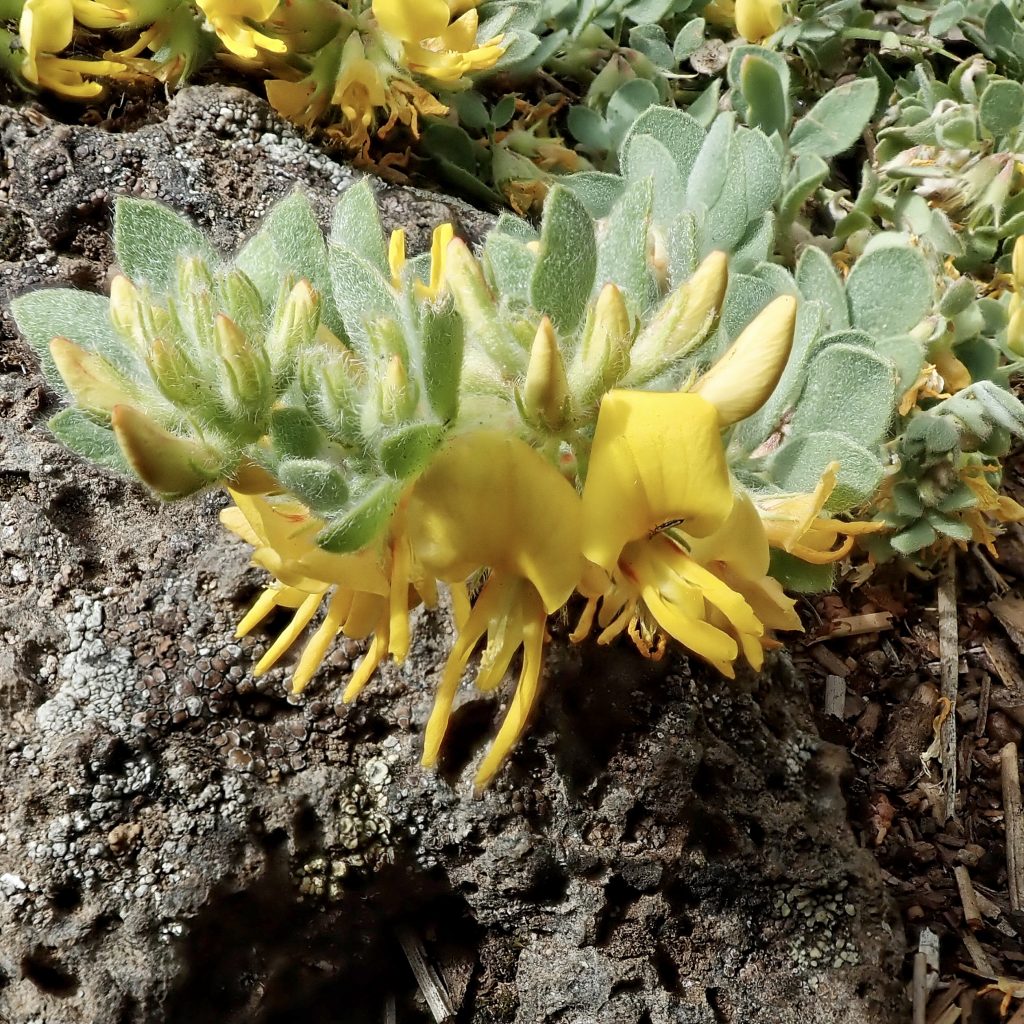
There has been a bit of a taxonomic upheaval in what used to be the genus Lotus, with most of our native American species moving to Hosackia or, in this case, Acmispon. Members of Fabaceae (pea family) are complex and variable organisms, and a certain amount of lumping was done for simplicity’s sake. But now, due in large part to advances in molecular biology, the pendulum is swinging back, and I would expect to see quite a few more revisions in the coming years.
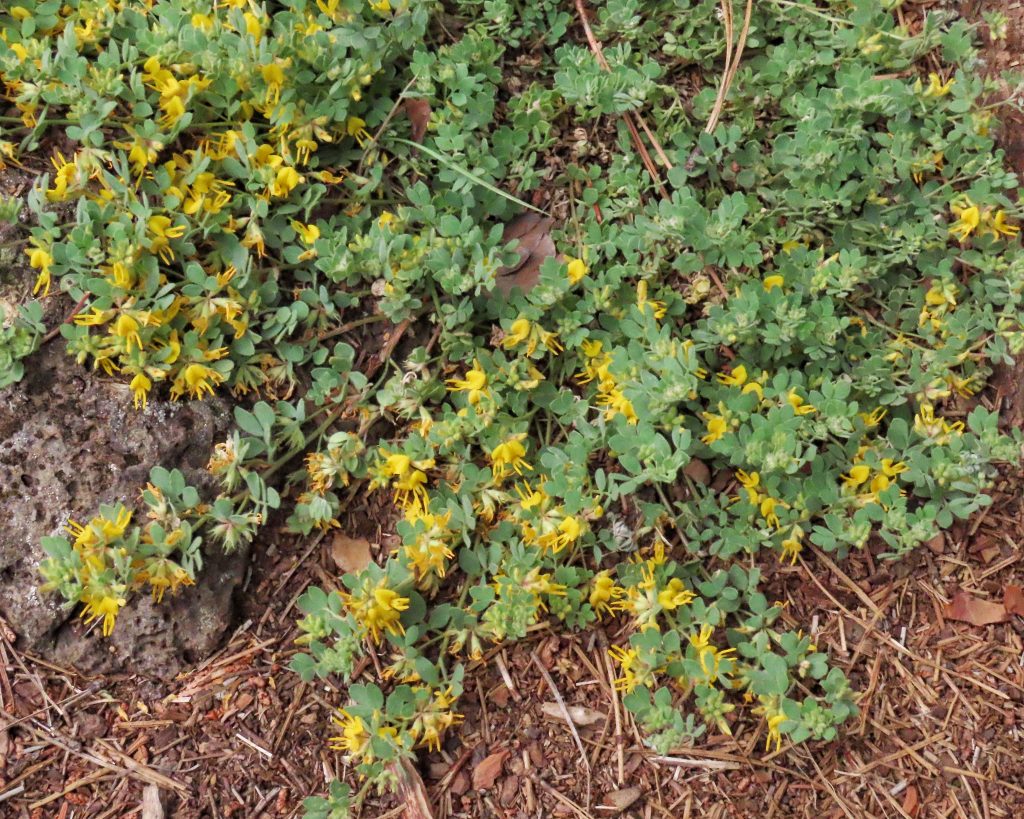
Regardless of taxonomy this will always be Nevada deervetch to me, although I see it also goes by the common names Nevada bird’s-foot trefoil and Douglas’ lotus. It is a favorite of mine because it is one of the few peas I can identify on sight. Oddly, it was hard to find information on ecological relationships that was specific to this plant. Nor does it seem to have had much ethnobotanical use, since I didn’t find information about that either.
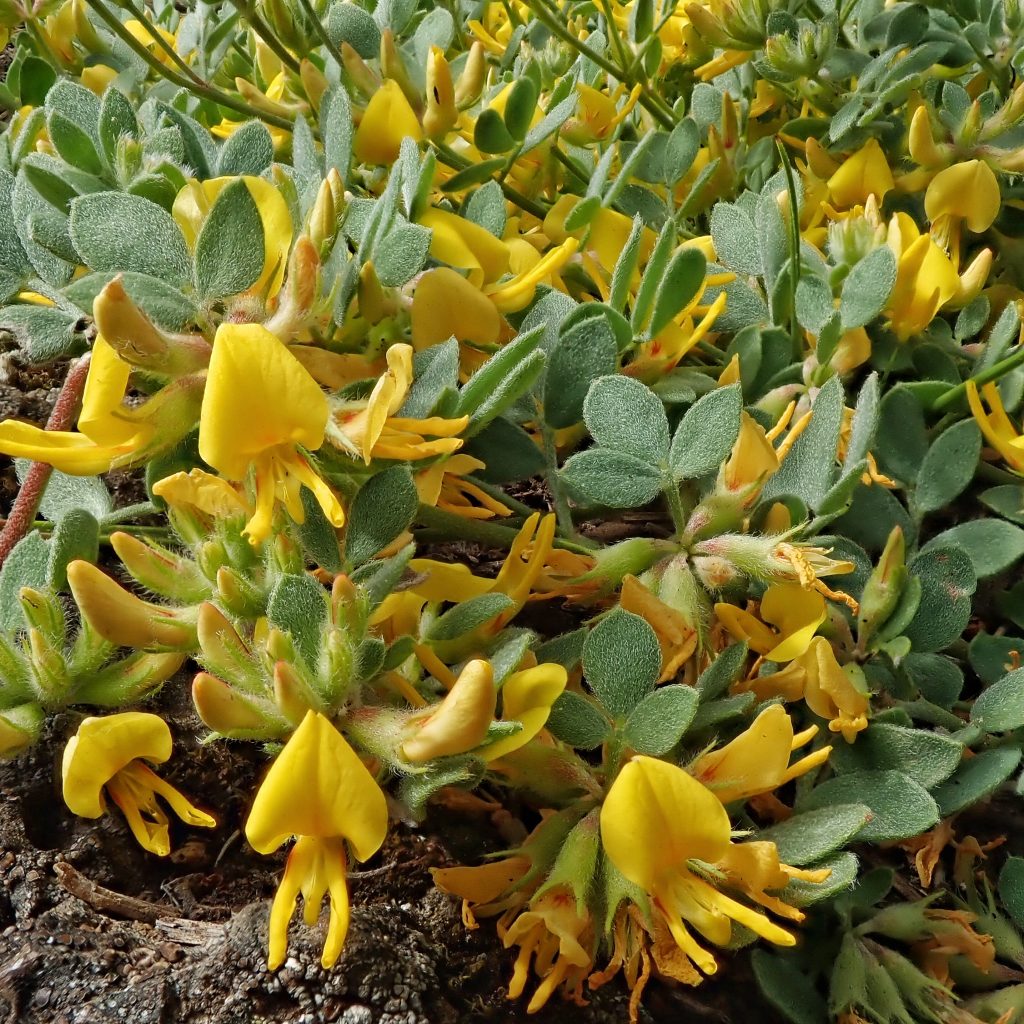
Description– Mat forming perennial, up to 8” tall, with pinnate leaves and yellow flowers; 3-5 irregularly spaced leaflets, green to grey and hairy, with a round rachis and no stipules; many yellow pea flowers, upper ones nearly sessile.
Similar species–A. wrangelianus has a flattened leaflet stem (rachis); other Acmispon spp. have flowers that are cream to pink; Lotus corniculatus has bottommost pair of leaflets widely separated from the top 3; Hosackia oblongifolius, as well as other Hosackia spp. have definite stipules.
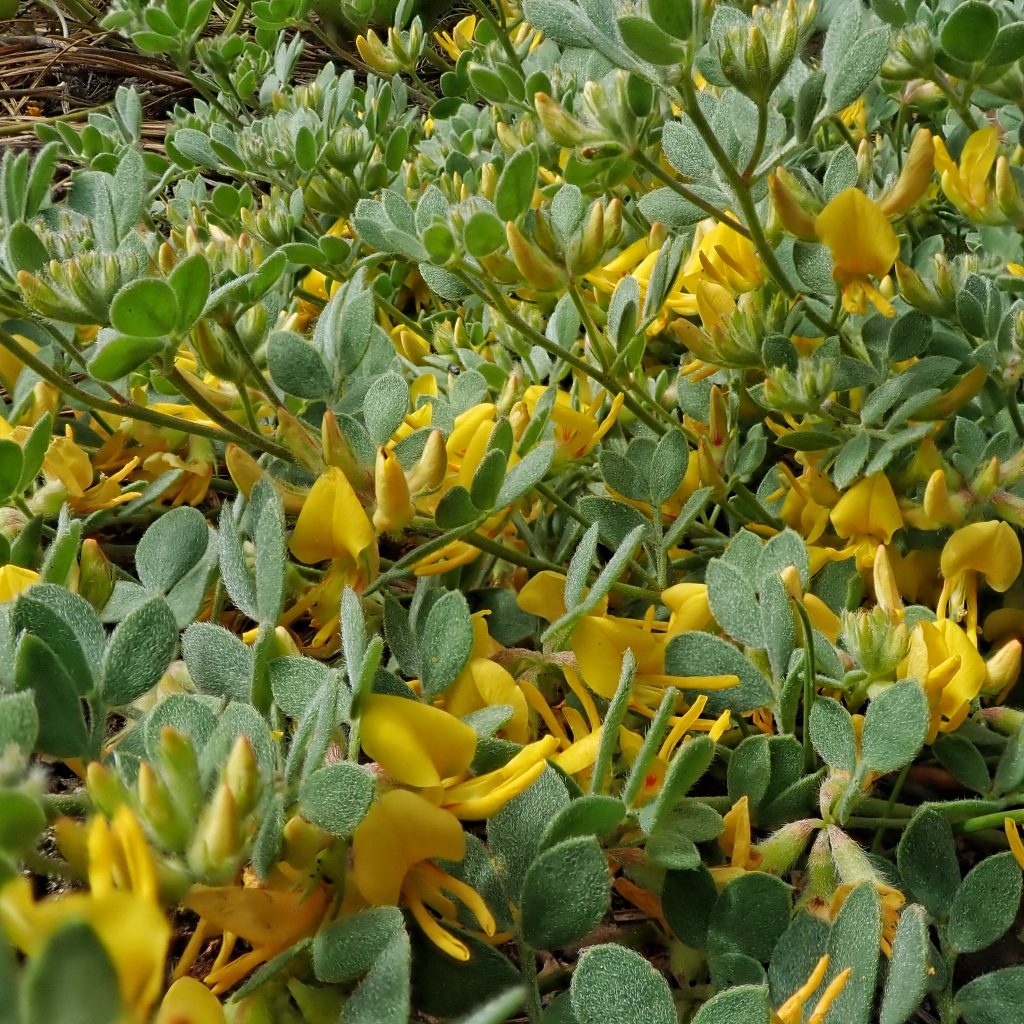
Habitat-Sandy or rocky soil in forest openings up to 5,000’ elevation.
Range-Western North America; in our region it is found on the east and west slopes of the Cascades, except absent from the north Cascades; also on the east side of the Coast Range, and in some montane areas in the eastern part of our region.
Reproductive timing– Blooms May to September
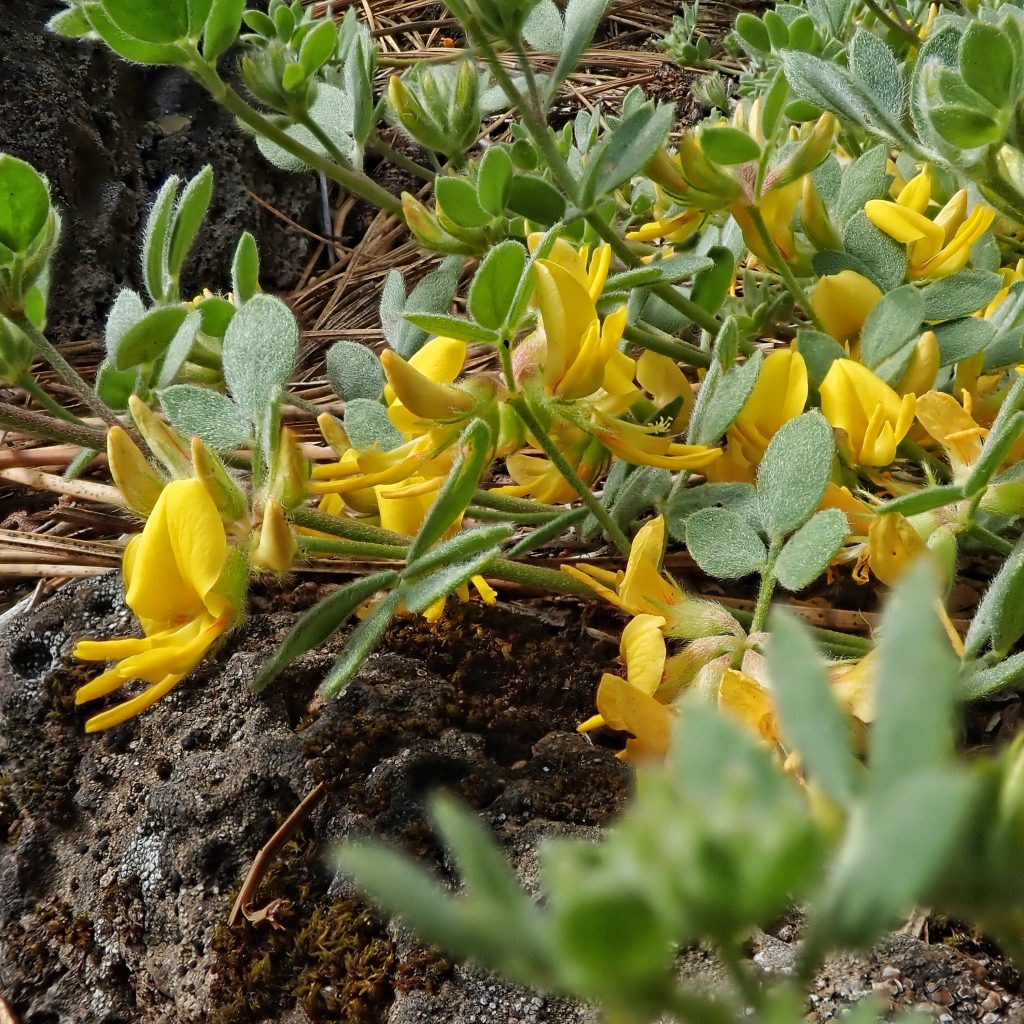
Eaten by-There are a number of insects that utilize members of this genus as larval hosts, but I can find nothing specific for A. nevadensis. It is a good nectar and pollen source for some pollinators, and deer, elk, and other herbivores browse its foliage.
Etymology of names–Acmispon is possibly from the Greek for ‘hooked fruit tip’. The specific epithet nevadensis refers to the location of the type specimen.
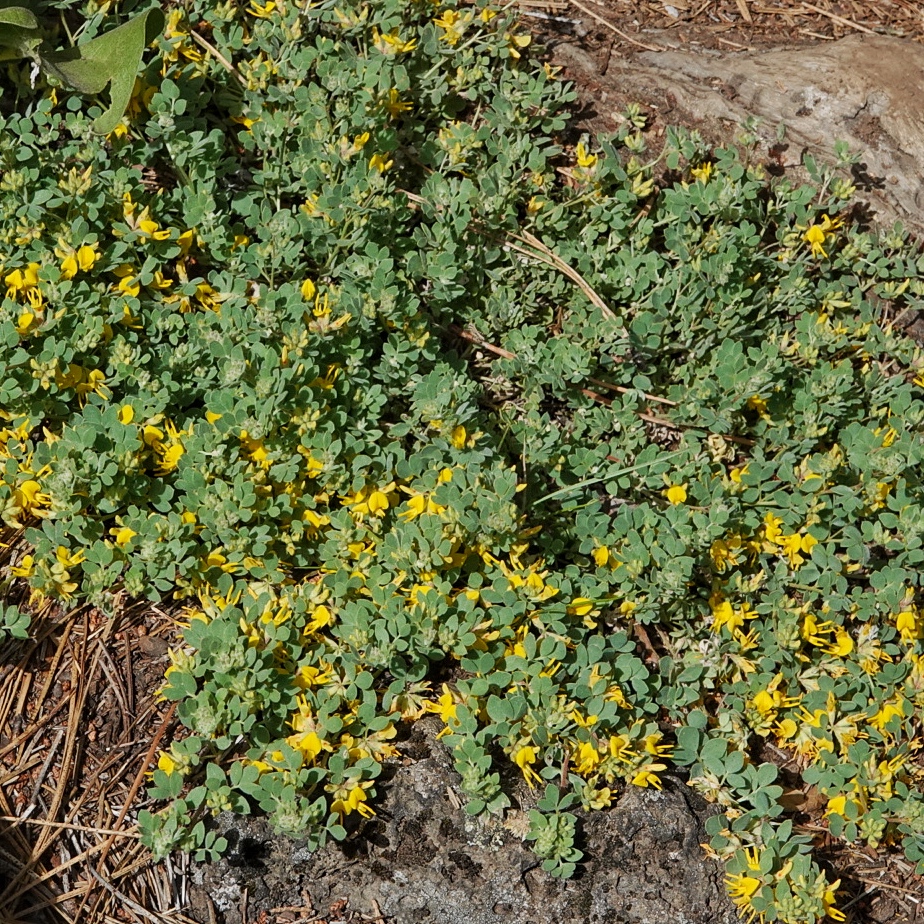
OregonFlora Acmispon nevadensis var. nevadensis
Lotus nevadensis | Nevada Deervetch | Wildflowers of the Pacific Northwest
